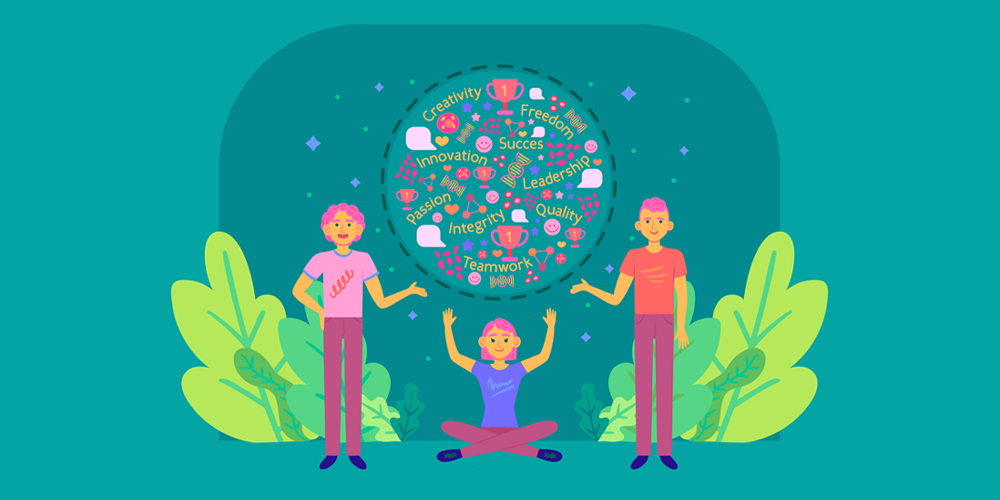
In a world where connections matter as much as knowledge.
What it is to be well equipped with skills that help you communicate and build connections.
In a current world, where learners have opportunities to evolve with time and collaborative learning is shaping the future of education.
When it comes to schooling, collaborative learning comes with a huge set of challenges and advantages. When we look at it from a learning perspective, it helps students in looking forward toward the future – it gives you strength to focus on future based learning.
There is no minimum requirement for people involved in collaborative learning, it can be two, five, twenty or even hundreds. It has more to do with quality than with quantity.
In a classroom set-up, it allows childrens to learn the essence of teamwork, broadens perspectives, and prepares students for real-world challenges.
Contents
What is Collaborative Learning?
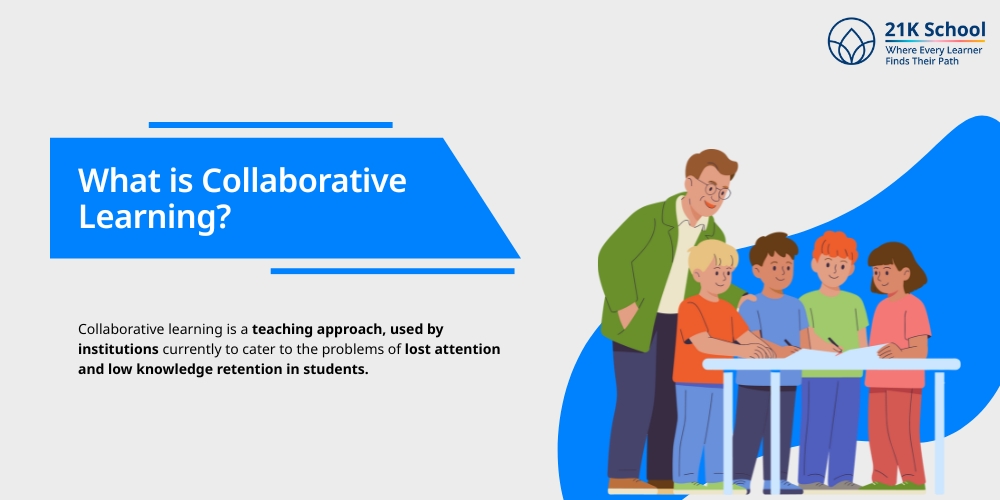
Collaborative learning is a teaching approach, used by institutions currently to cater to the problems of lost attention and low knowledge retention in students.
It is an approach where students work together in small or large groups, to learn as they explore and question the environment created around them.
The skills that students work on can range from solving a problem, discussing a topic, or completing a project (it’s the collaborative effort and learners will to be a part of the process that matters) – these skills are the most interactive forms of learning from a learner’s perspective.
Unlike traditional classroom settings where the teacher is the primary and only source of knowledge, this more personalised form of learning.
Collaborative learning puts students at the centre, encouraging active participation and shared responsibility – this boosts confidence and even helps in encouraging motivation and engagement in classrooms.
Why Use Collaborative Learning?
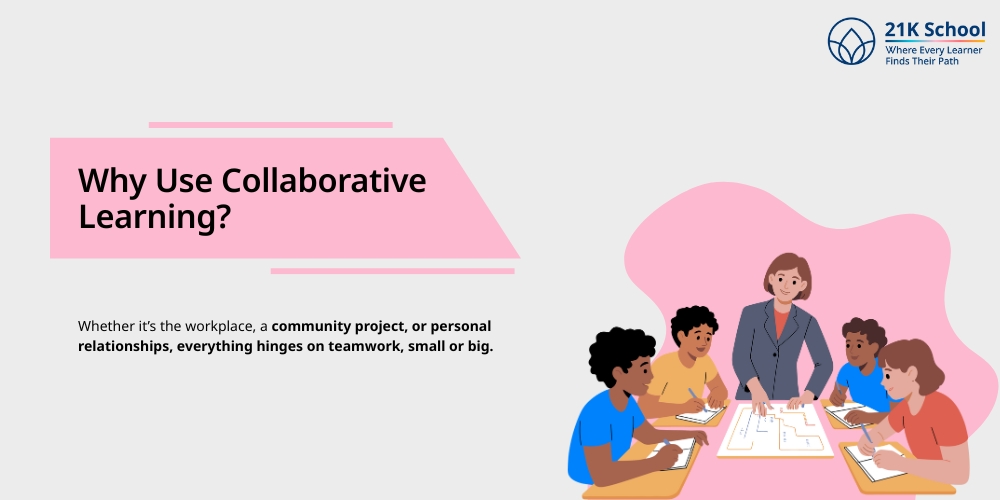
Why should someone use collaborative learning?
Why not other options available? And how is it better than the traditional set-up?
Because the real world demands it – it’s the need of the hour.
Whether it’s the workplace, a community project, or personal relationships, everything hinges on teamwork, small or big.
Collaborative learning mirrors these features for learners, preparing them to survive in complex situations and cater to the demand of real life situations.
It’s like being well equipped with all the resources before the situation arises. But cant always be prepared to be at the conclusion or solve immediate problems as learning is not a destination, it’s a journey.
Moreover, it transforms passive learning into an interactive experience, keeping students engaged for a long time and even motivates them to learn more and interact more.
Benefits of Collaborative Learning
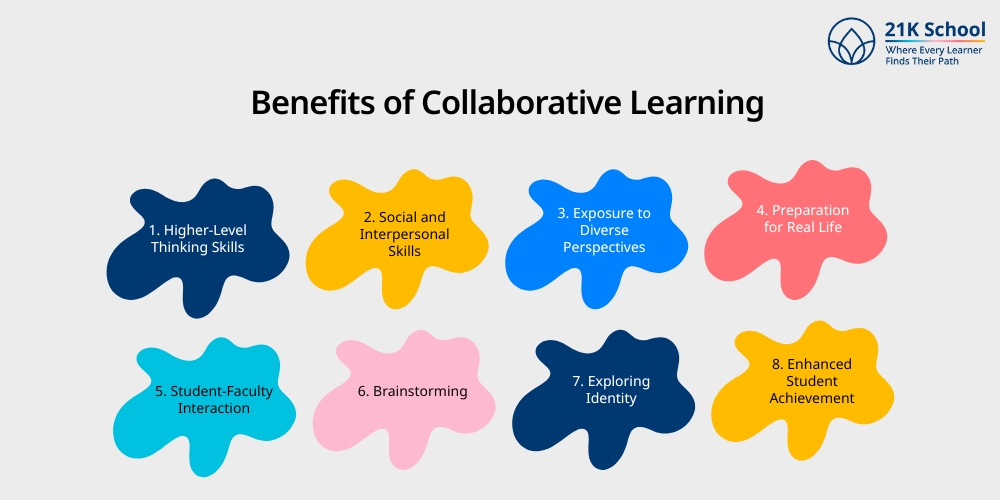
It has numerous benefits: Collaborative learning offers a wide range of advantages for both students and educators.
These benefits cover all the aspects of life, right from academic, phycological to even being long term life skills.
Benefits of collaborative learning include :
1. Higher-Level Thinking Skills
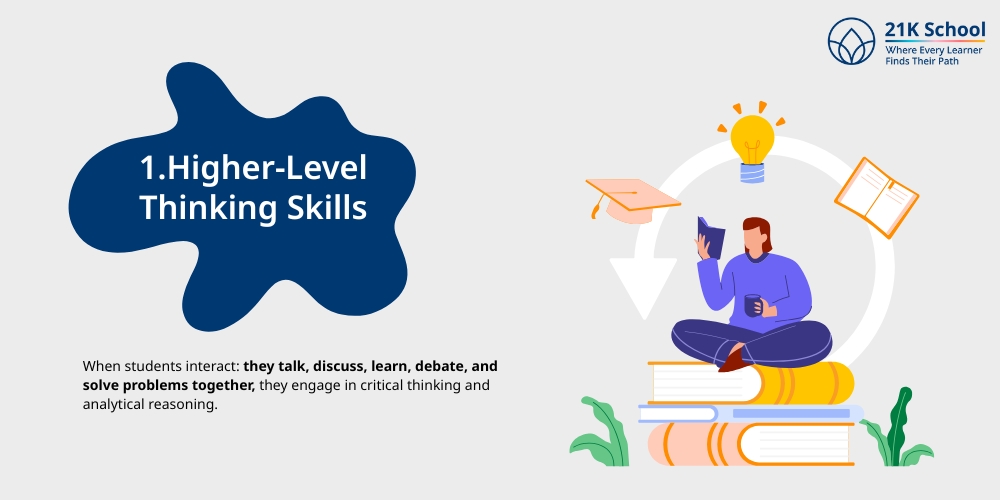
When students interact: they talk, discuss, learn, debate, and solve problems together, they engage in critical thinking and analytical reasoning.
These skills go beyond memorization and encouraging deeper understanding of things and concepts.
2. Social and Interpersonal Skills
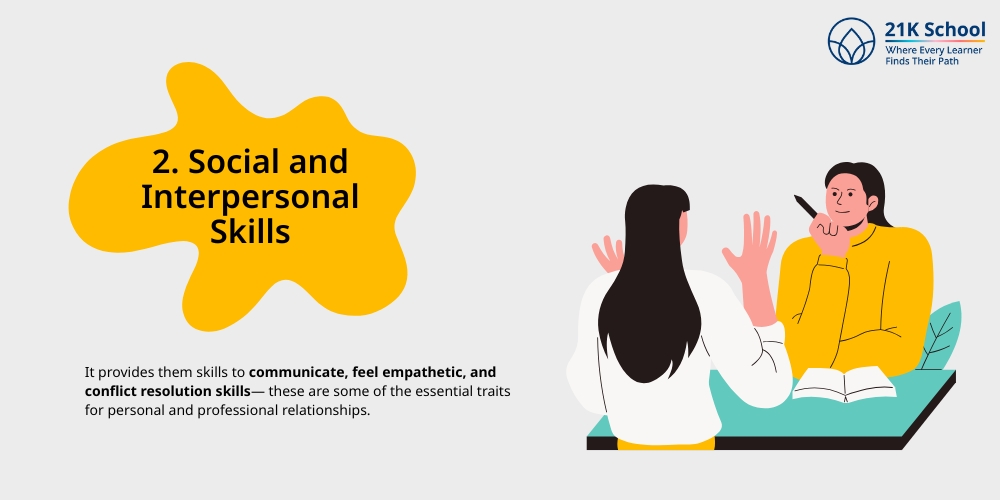
When working in groups, it gives students an opportunity to interact and grow socially.
It provides them skills to communicate, feel empathetic, and conflict resolution skills— these are some of the essential traits for personal and professional relationships.
It nurtures social cohesion. When in a social situation acceptance brings in alot of confidence and contributes to self awareness. With this, students tend to contribute more to society with their skills and their knowledge.
3. Exposure to Diverse Perspectives
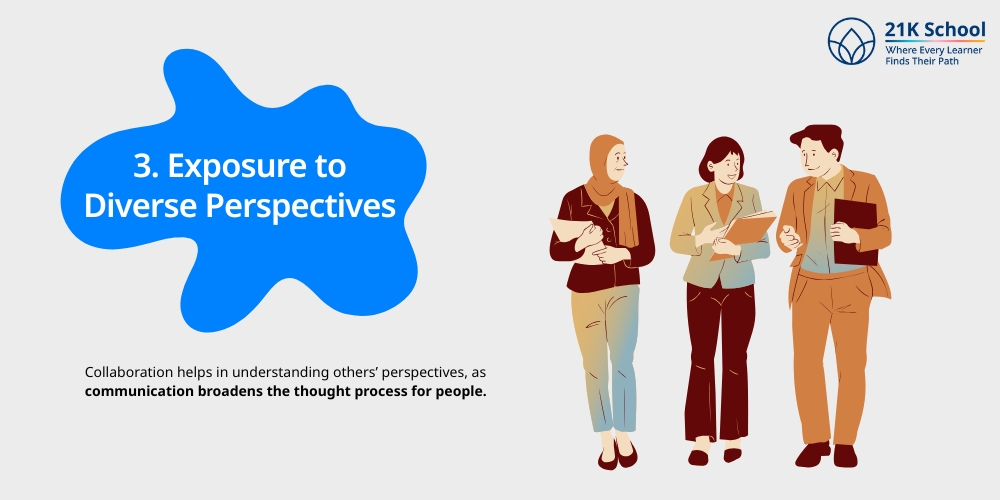
Collaboration helps in understanding others’ perspectives, as communication broadens the thought process for people.
Another beneficial aspect could be Collaborating with peers from different backgrounds; both culturally and socially, opens minds to new concepts, ideas and viewpoints — diversity brings in a different level of creativity.
This promotes inclusivity and global awareness. With every step towards inclusivity, one learns to grow comfortable in their own skin and that matters in the long term perspective.
4. Preparation for Real Life
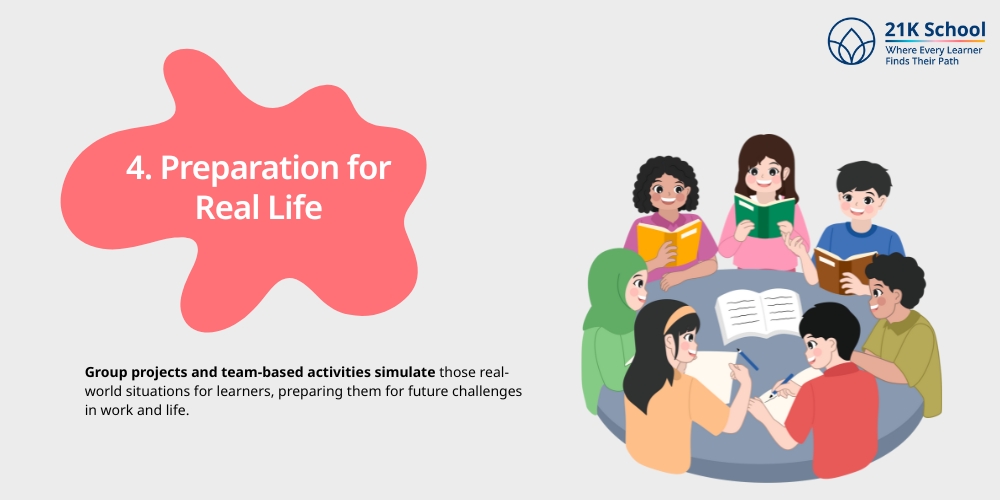
Learning is not a destination, it’s a journey.
And in this you learn alot about life, from real world experiences that you face as you grow.
Group projects and team-based activities simulate those real-world situations for learners, preparing them for future challenges in work and life.
5. Student-Faculty Interaction
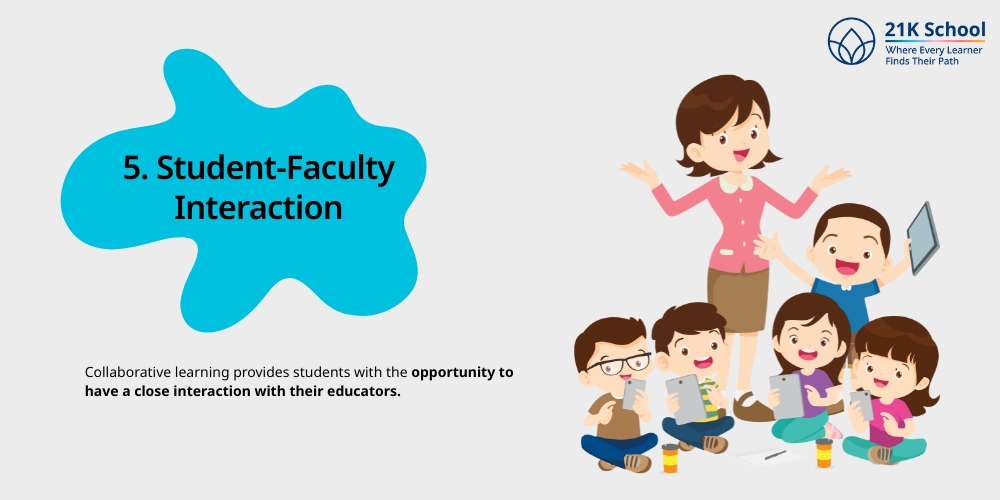
In an environment where students grow, they tend to learn and interact more rather than the traditional set-up.
Collaborative learning provides students with the opportunity to have a close interaction with their educators.
When interacting with educators, students in traditional set-ups used to feel scared and be less confident under the one way flow of information.
But in collaborative learning students interact with tehri knowledge which allows them to be more vocal.
In such a supportive environment, learners tend to develop skills that are best suited for their overall advancement.
6. Brainstorming
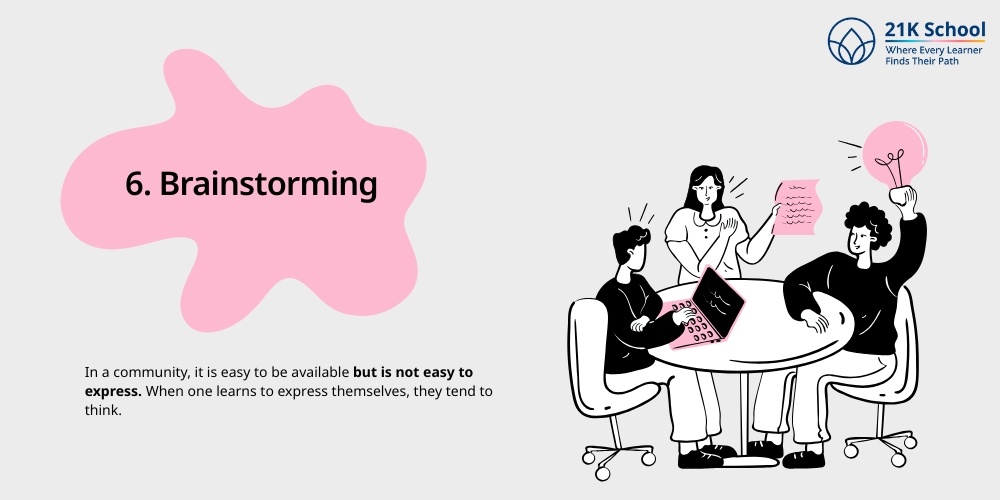
In a community, it is easy to be available but is not easy to express.
When one learns to express themselves, they tend to think.
It is all about the synergy between multiple minds that sparks creativity in them, promoting brainstorming sessions, can be scheduled personally or by the institutions which often lead to innovative ideas that wouldn’t emerge in isolation.
It is always the most underrated collaboration that marks miracles, and when two young bright minds interact they talk creativity mixed with emotion and ideas that make wonders.
7. Exploring Identity
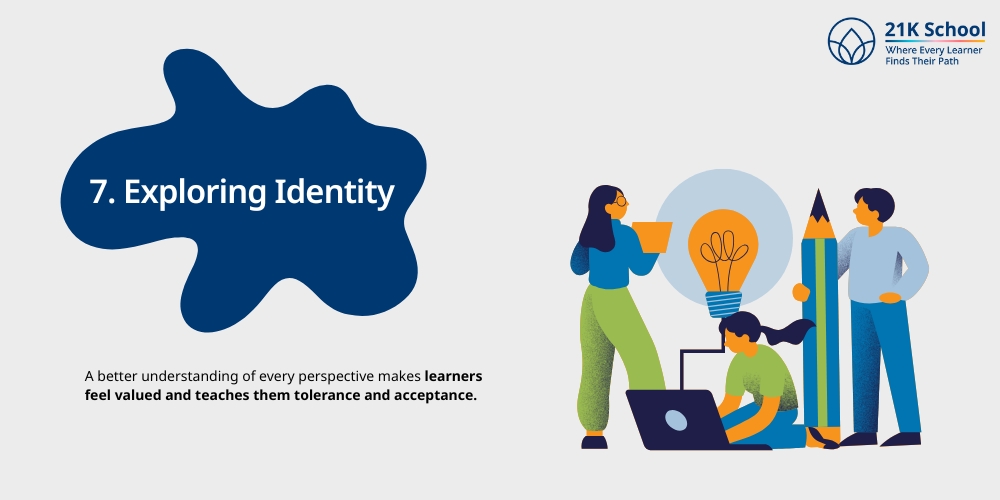
Collaboration in a healthy environment promotes inclusivity.
Such environments allow students to express themselves, making them more confident and motivated.
When people interact with others, they tend to understand their feelings and then it is easier for them to understand how people react in a certain way, and this understanding makes us a better human – everybody loves being around people, who don’t judge them.
A better understanding of every perspective makes learners feel valued and teaches them tolerance and acceptance.
8. Enhanced Student Achievement
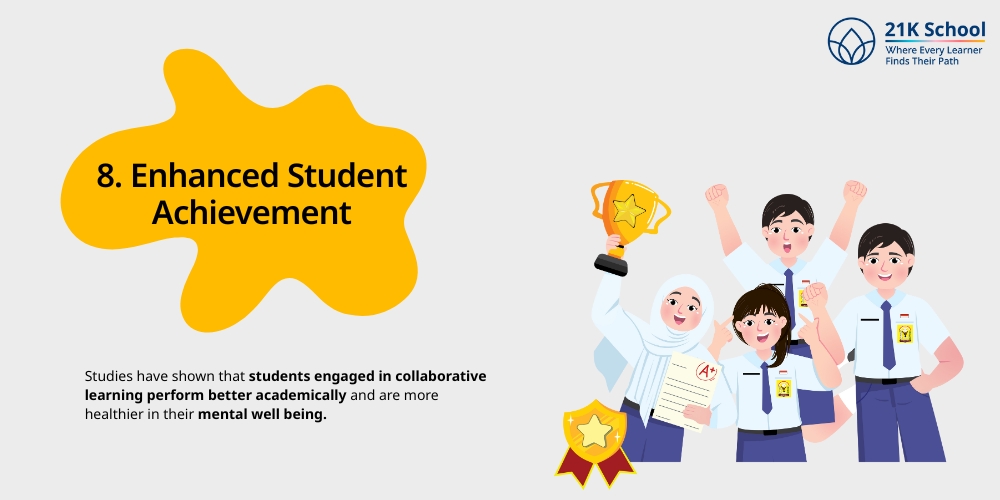
What does it do to kids?
Studies have shown that students engaged in collaborative learning perform better academically and are more healthier in their mental well being.
It boosts retention and comprehension through active engagement – making them feel more confident and promoting active participation.
Students learn more by themselves as they experiment rather than being dictated.
It’s a real value of life that when an experience is worth remembering, we never forget it and as for students, experience makes their life lessons valuable.
It contributes to their overall development.
Key Features of Collaborative Learning
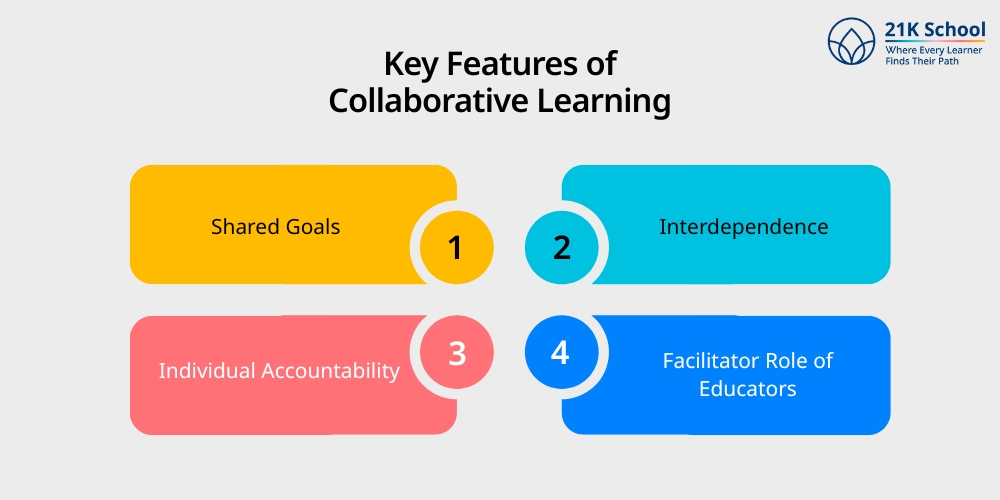
There are a lot of things that work in favour of collaborative learning. Effective collaborative learning is not just about making groups and studying together, it has some more features included:

The students there in every group activity are believed to have a clear objective and they work together towards that collectively.
Shared goals make their understanding better and open their perspective to the opinions of others.
2. Interdependence
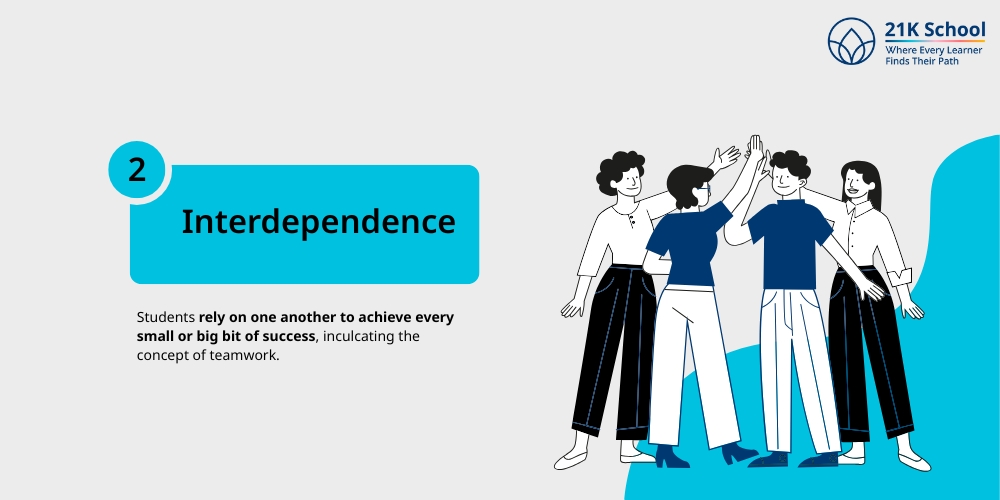
In a shared environment, everything goes hand in hand. Students rely on one another to achieve every small or big bit of success, inculcating the concept of teamwork.
This interdependence teaches students to help others and ask for help wherever needed, this can ultimately make them a very sound individual – emotionally and mentally.
3. Individual Accountability
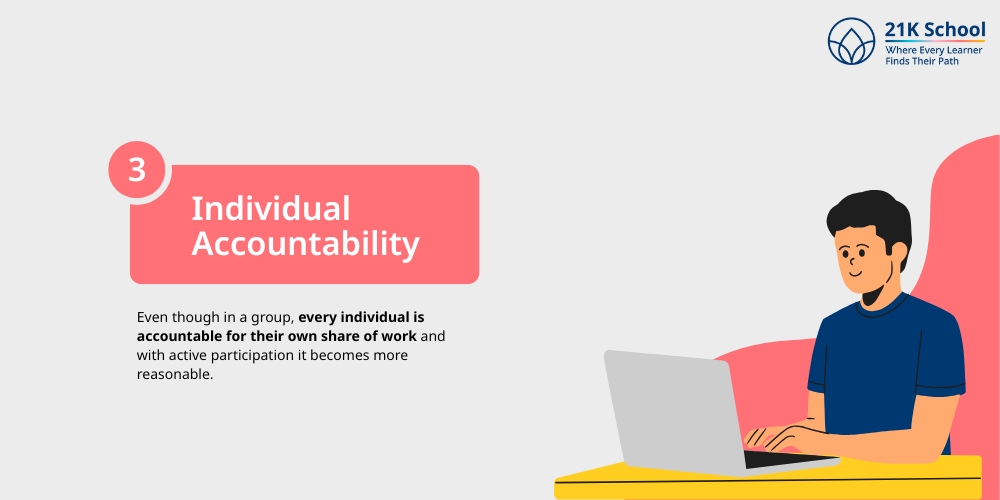
Even though in a group, every individual is accountable for their own share of work and with active participation it becomes more reasonable.
Each participant is supposed to contribute meaningfully, ensuring no one coasts on the effort of others, and no one bears the loss for others.
It’s a two way situation.
4. Facilitator Role of Educators
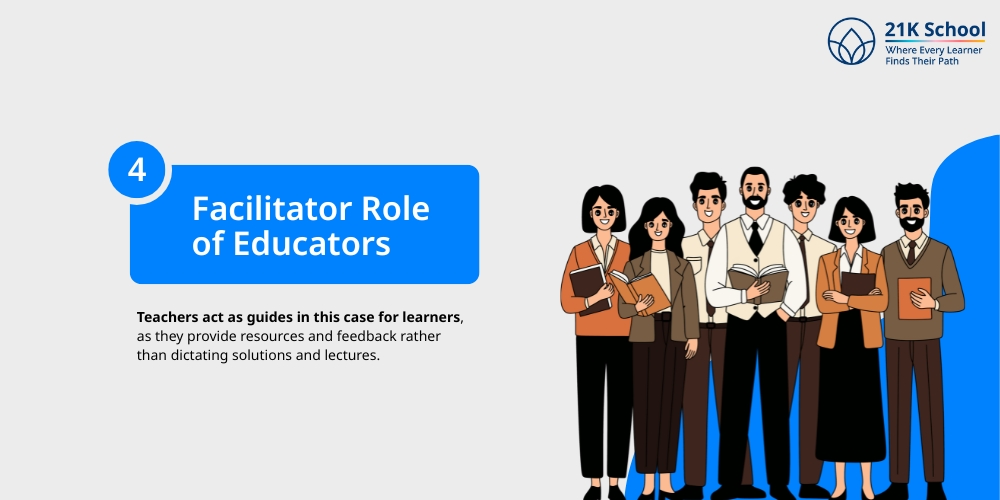
After all it’s not about the technique, it’s more about the perfect blend of guidance and understanding.
Teachers act as guides in this case for learners, as they provide resources and feedback rather than dictating solutions and lectures.
Conclusion
Collaborative learning is more than a teaching method,
It’s a philosophy that nurtures growth, inclusivity, and lifelong skills, unlocking immense potential and collective intelligence among learners.
This is a part of lifelong learning, which develops over time and is to serve with the concept of shared understanding and awareness on both personal and environmental level.
Collaborative learning is a journey — a journey of shared exploration and growth, that inculcates the culture of critical thinking and problem solving.
Are you ready to embrace the magic of learning together?
As educators, we at 21k schools promote learning in a fun way, ensuring active participation and guaranteed success.


